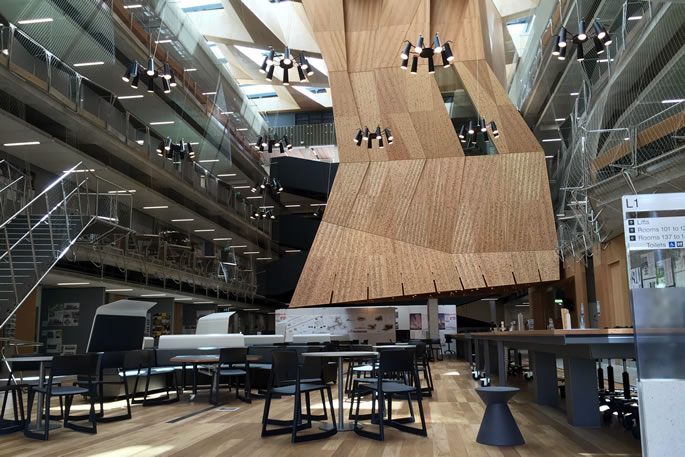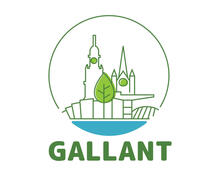The University of Melbourne’s new Melbourne School of Design building is a remarkable translation of a shift in pedagogy aiming to prepare students for the new challenges of the fast changing social, cultural and economic contexts. Professor Tom Kvan, Dean of the Faculty of Architecture, Building and Planning once said that “…the building is the embodiment of the architectural and design principles explored at the Melbourne School of Design […] This building practices what we teach. It’s a building dedicated to pushing design frontiers and approaching challenges with innovative solutions”.

The complex structure of concrete, wood, glass and zinc is much more than part of a trend to open learning spaces to more transparency and light. Just after months of use by students and academics, it shows that this is a translation into built space of a move individual gated territories in favour of shared spaces. It is also a building serving as a living pedagogical tool for students in the Faculty of Architecture, Building and Planning, with innovative ways to use space, rethink the arrangement of corridors, the roof and building elements. Students can simply walk around the building and see not only technical elements of planning, building or architectural solutions, but how these elements impact the environment around them and, in turn, how they become part of spaces that are repositories of cultural expression and campus ethos. It is also easy for students to observe why University of Melbourne aimed and succeed to make this new building an example of sustainability and reduction of carbon footprint.
The emphasis on the place independency is what allows students and academics use new technologies to work wherever and whenever is best for them. This focus on celebrating diversity, autonomy, flexibility and creativity is clearly underlined through impressive architectural and technological solutions. The wood structure of the roof is opened by translucent gaps that allow the use natural light in the atrium. The roof is also supporting a suspended wooden structure where we find three impressive studio classrooms, placed symbolically at the core of the building. The ground floor is designed to accommodate a complex Fab Lab - where we can see through massive windows how students use 3D printing and new technologies for their models - a pedestrian thoroughfare on the axis on the campus and the Faculty Library. The main teaching levels are placed on the superior floors, in a massive atrium where walls can shift and change the classroom shapes and dimensions as needed by students and teachers. In this space corridors are not simply organising walking, but turn into learning spaces and dynamic opportunities for random encounters and serendipity, that is encouraged by a surprising transparency and versatility of spaces. Students are here invited through this unusual use of spaces and structures to explore new and seemingly impossible solutions, with ingenuity and mastery of knowledge. The university is using now a building that adds to the welcoming space filled with new technology and comfortable furniture a living invitation to embrace the enthusiasm for learning, freedom of thinking, creativity and innovation.
Dr Stefan Popenici
Senior Lecturer in Higher Education
Faculty of Architecture, Building and Planning
Teaching and Learning Unit
Nike sneakers | Men’s shoes
- Log in to post comments













Latest Comments